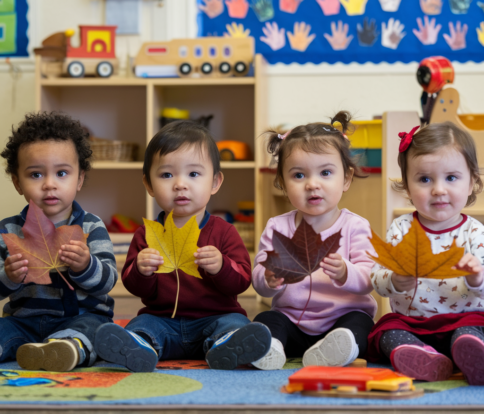
The Power of Mindful Eating
In today’s fast-paced world, where meals often feel rushed, incorporating mindful eating and gratitude practices can help children cultivate a healthy relationship with food and foster a positive outlook on life. These practices enhance not only physical health but also emotional intelligence and social connections.
Child care directors and caregivers hold a key role in influencing the future habits and attitudes of the children in their care.
Try these activities to implement mindful eating into your centre’s daily routine:
- Encourage sensory exploration: Guide children to notice the colors, smells, and textures of their food before eating.
- Practice slow eating: Teach children to chew slowly and savour each bite.
- Discuss food origins: Share stories about where different foods come from, connecting children to the broader food system.
Gratitude Activities to Enhance Mealtime
Incorporating gratitude into our daily routines can significantly impact children’s attitudes towards food and overall well-being.
Try these activities to help you facilitate gratitude within children during their mealtimes:
- Create a “Thankful Tree”: Set up a tree-shaped bulletin board where children can add leaves with things they’re grateful for, including favorite foods.
- Implement a daily gratitude ritual: Before meals, have children share one thing they are thankful for that day.
- Host a “Gratitude Feast”: Organize a special meal where children help prepare simple dishes and express appreciation for the food and each other.

Linking Mindfulness to Healthy Choices
When children are more aware of their food and its impact on their bodies, they are more likely to make healthier choices.
Here’s how to reinforce this connection:
- Establish Food and Body Connections: Discuss how different foods make our bodies feel
- Identifying Hunger Cues: Encourage children to listen to their hunger and fullness cues
- Meal Planning: Involve children in meal planning and preparation when possible

Embracing Seasonal Themes
Autumn provides the perfect backdrop for these lessons. Use the harvest season and Thanksgiving to reinforce messages of gratitude and community:
- Mini Harvest Festival: Organize a mini “harvest festival” with seasonal fruits and vegetables
- Autumn Themed Arts & Crafts: Create autumn-themed crafts that celebrate nature’s bounty
- Gratitude Sharing: Plan a Thanksgiving-inspired meal where children can share what they’re thankful for

By implementing mindful eating and gratitude practices, we’re nurturing not only healthy eating habits but also emotional intelligence, social skills, and overall well-being in the children under our care. The positive impact of these efforts can extend beyond the classroom, potentially reaching families and communities.
Small changes can lead to significant impacts; by fostering an environment of gratitude and mindful eating, we lay the groundwork for healthier, happier children who appreciate their food and the world around them. This autumn, let us seize the opportunity to plant these seeds of mindfulness and gratitude in our centres, knowing that the habits we nurture today will blossom into lifelong skills that create a positive ripple effect for years to come.
